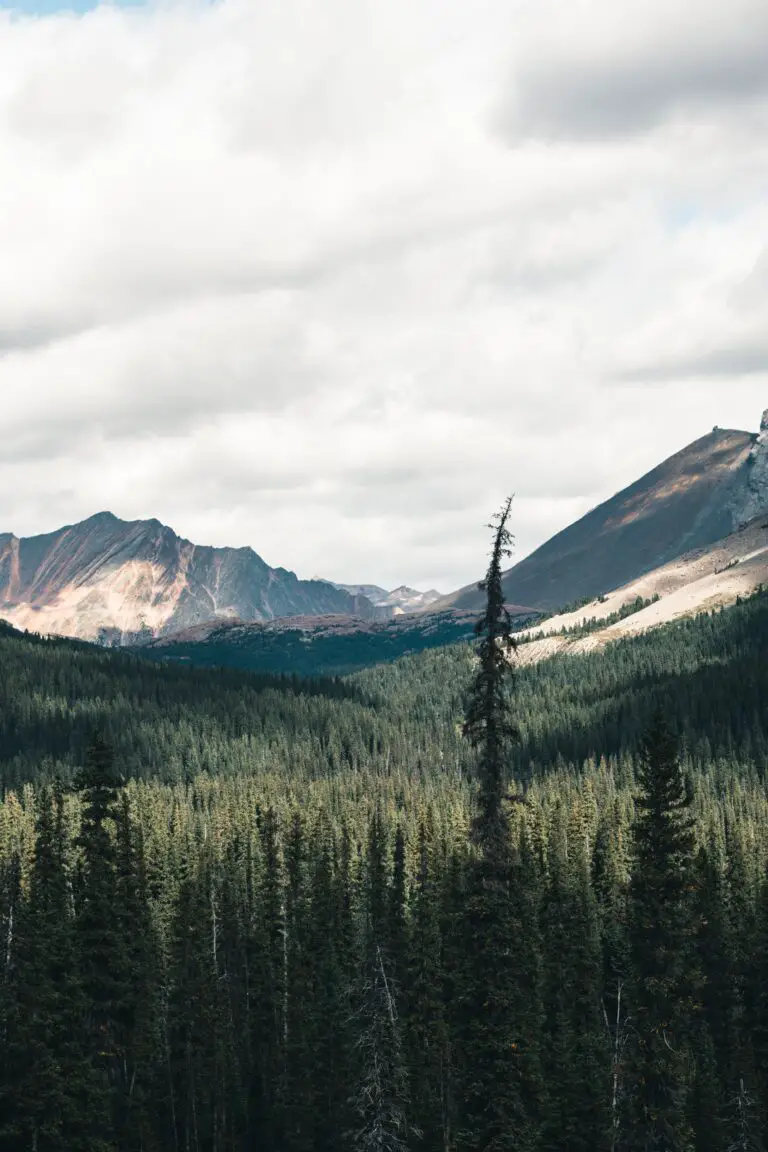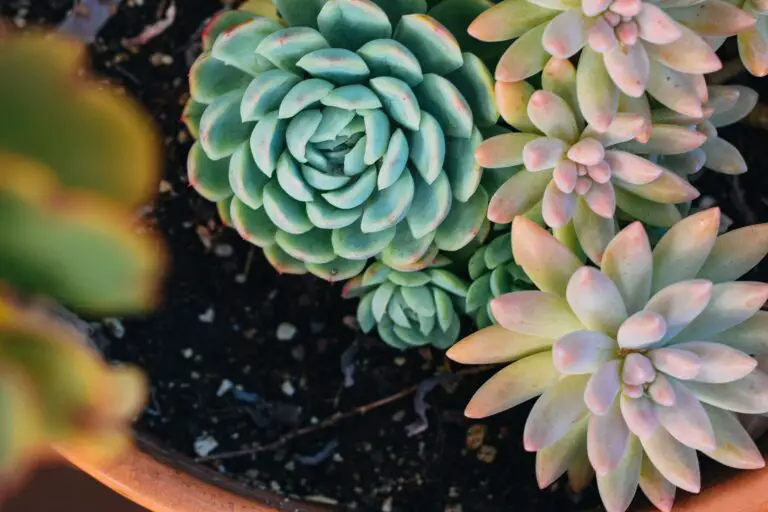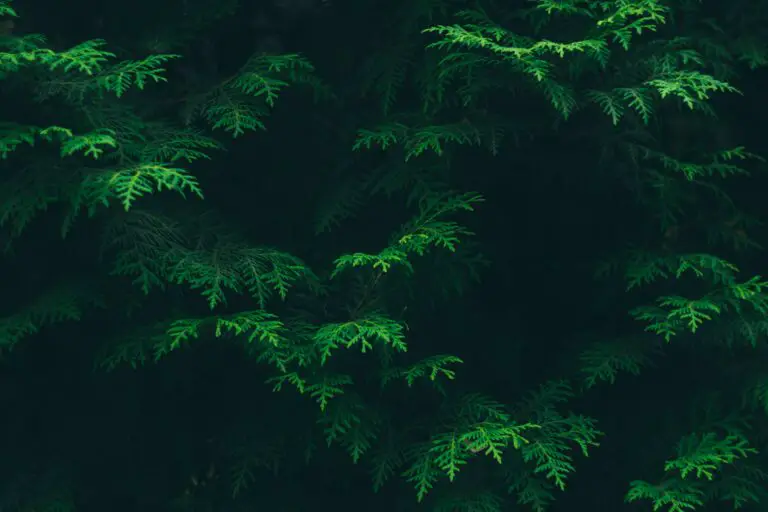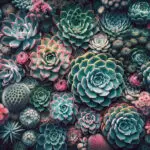Introduction to Sedums
Welcome to the alluring world of Sedums, a genus teeming with diversity that has captured the hearts of garden enthusiasts far and wide. These succulent perennials, beloved for their hardy nature and exuberant forms, bring not only a fascinating array of shapes and sizes to the garden but also an intriguing question for the green-thumbed collector: Are they evergreen wonders in the plant kingdom?
With a staggering over 400 species, Sedums, also known as Stonecrop, offer a wide palette of colors, textures, and growth habits, making them a versatile choice for any gardening project. From the tight rosettes of Sedum spurium to the tall, stately spires of Sedum telephium, these plants embody adaptability; they are just as at home softening the edges of a rockery as they are creating a lush, living tapestry on a green roof.
The endearing charm of Sedums isn’t merely their visual appeal, but also their undemanding nature, thriving with minimal water, in poor soils, and under the full gaze of the sun. It’s no wonder gardeners often seek these resilient characters when dreaming of a garden that’s both vibrant and hassle-free. As seasons change, the evergreen question lingers; garden voyeurs are eager to discover if these plants will grace their landscapes with year-round hues or retreat with the first whisper of winter.
Join us as we delve into the fascinating world of Sedums—plants that don’t just thrive but bring with them a robust palette of year-round interest. Whether providing durability to the drought-prone regions or infusing a pop of color amidst the frost, Sedums may just be the unsung heroes of the garden through every season.
Defining Evergreen Plants
So, what exactly makes a plant evergreen? It’s like having the perfect green outfit that never goes out of style, no matter the season. Evergreen plants are the botanical fashionistas, donning their vibrant leaves all year round. Unlike their deciduous cousins that shed leaves faster than a shaggy dog in summer, evergreens keep their foliage through the seasons, come rain or shine. And in the verdant world of succulents, sedums are proud card-carrying members of this evergreen club.
Sedums and Their Evergreen Status
Now, let’s spill the soil on sedums—are they truly evergreen? These plucky plants laugh in the face of winter! Sedum species, often referred to as stonecrop, maintain their succulent leaves when other plants are bare and boring. But here’s the deal: some sedums might take a little winter nap depending on how harsh your climate is. However, many sedum varieties are like that friend who keeps their cool during a stressful situation—they remain steadfastly lush, adding a sprinkle of eternal spring to your garden or window sill. To see these resilient beauties in action, take a peek at this informative video on sedums.
For those who have embraced the green-thumb life, knowing your sedum’s evergreen nature can be a game-changer for your garden’s year-round aesthetics. If you’re thinking about adding some sedum magic to your living tapestry, or just need to fine-tune your care tactics, delve into our guide on Sedum Palmeri Splendor: Beauty in Succulent Care—it’s your golden ticket to sedum success!
In essence, sedums march to the beat of their own drum, with a resilient spirit that keeps their flashy foliage on fleek through frost and swelter alike. They’re a testament to Mother Nature’s fashion-forward thinking, providing a touch of evergreen elegance that keeps on giving, season after season. So when you gaze upon these perennial charmers, remember, you’re witnessing a little piece of nature’s perpetual parade.
Variety of Sedums: Evergreen and Deciduous
Embarking on a journey through the world of Sedums is akin to entering a botanical treasure trove where every turn reveals a distinct delight. These versatile succulents are not just about their plump, water-storing leaves or their clusters of starry flowers; it’s their seasonal persistence that intrigues. Among the multitude of varieties, we find two key groups: the evergreens that refuse to undress for winter, and their counterpart, the deciduous types, which embrace seasonal slumber.
Imagine a sedum garden where the steadfast evergreen Sedums stand resilient through the chill of winter, their foliage a persisting promise of green amid a sleeping landscape. These are the stoic guardians of the garden, unyielding to frost’s touch. The ever-present Sedum spurium, with mats of vibrant green to red hues, or the tough yet dainty Sedum reflexum, known for its needle-like blue-green leaves, illustrate the group’s tenacity and charm. They’re the dependable friends that ensure you’ll always have a splash of color, even when the rest of the garden is subdued.
In contrast, deciduous Sedums are the dramatists of this succulent society, enacting a full performance from spring’s first sprout to the grand finale of autumn’s fiery foliage before gracefully exiting the stage in winter. These varieties, like the beloved Sedum ‘Autumn Joy’, burst forth with life in warmer months and sport extravagant blooms that bees and butterflies clamor over. When the colder months arrive, their act concludes, and they retreat below ground, only to prepare for next season’s show.
Real-life examples abound in gardens across the globe. For instance, take a leisurely stroll through the historic landscapes of England, and you’ll likely encounter the evergreen Sedum acre valiantly carpeting stone walls, its tenacity an emblem of age-old resilience. Conversely, the deciduous Sedum telephium is celebrated for its autumnal performance in the White House Kitchen Garden in the USA, where its crimson crowns dazzle onlookers and signal the onset of harvest season.
Melding the characteristics of these two groups creates an undying tapestry of textures and hues. Deciduous sedums surrender their leaves to the soil, contributing to the garden’s cycle of life with their fading beauty. Meanwhile, the evergreen sedums catch the eye and heart, sustaining splendor when all else fades. They represent the everlasting, a lush anchor in the ebb and flow of seasons.
For insight into how these remarkable plants lend structure and continuity to garden borders, we invite you to delve into this video:
Embracing the full scope of sedum varieties can transform your green space into a year-round spectacle. You may find value in exploring expert gardening tips that can help you nurture these succulents to their full potential. Furthermore, understanding how to weave the evergreen and deciduous varieties into your landscape can be an art in itself. Consider looking at practical strategies for succulent garden design that emphasize the complementary beauty of these plants throughout each season.
In the realm of sedums, variety truly is the spice of life. The evergreen and deciduous factions each bring their unique zest, contributing irreplaceably to the garden’s collective charisma. They stand as verdant testaments to nature’s ingenious adaptations, each group playing their role in the great theatrical production that is the changing seasons.
Exploring Evergreen Sedum Species
When you think of hardy, low-maintenance plants that add a splash of color to the garden all year round, evergreen sedums should be at the top of your list. Let’s dive into the world of these resilient beauties and discover what makes them an enduring favorite amongst garden enthusiasts.
Evergreen sedums, also known as stonecrops, triumph against the cold blanket of winter, keeping their leaves when other plants have withered away. Take Sedum acre, for instance, a champion of the evergreen family. Its vibrant, star-shaped yellow flowers carpet rocky slopes, showcasing a remarkable ability to thrive in thin, unforgiving soils. Picture this: amidst the barren winter landscape, a patchwork of evergreen sedums providing a visual banquet of greenery—truly a sight to behold!
Why do these plants hold onto their foliage all year? It all comes down to survival. The fleshy leaves of sedums like Sedum spathulifolium are built to store water, making them adept at overcoming dry spells and the rigors of winter. Their robust nature ensures they retain their lush appearance while other plants buckle under pressure. It’s as if they’ve mastered the art of resilience, standing firm against the elements with an unwavering spirit.
One can’t help but admire the hardiness of these species. They’re not just survivors; they’re natural beautifiers. Landscapers often use evergreen sedums to create green roofs or to add texture to rock gardens, where their ever-present leaves provide a reliable backdrop to seasonal blooms. Discover the secrets to nurturing these stalwarts of the plant kingdom with a comprehensive guide on evergreen sedum care.
Evergreen sedums remain a testament to nature’s ingenuity. With species like Sedum reflexum, boasting its blue-green needle-like foliage, or the autumn fire of Sedum ‘Matrona’s’ deep red leaves, it’s clear that these evergreens offer more than just year-round greenery—they bring an enduring charm to any setting, natural or designed. And let’s not forget the practical side: their drought tolerance and low-maintenance nature make them a gardener’s dream.

In essence, if you’re looking for a plant that guarantees visual interest regardless of the season, the evergreen sedum should be high on your priority list. Their inherent toughness, coupled with a striking aesthetic, makes them ideal for crafting a garden that’s both enchanting and enduring.
Why Choose Evergreen Sedums for Your Garden?
Imagine a garden that maintains a lush, vibrant presence even when the rest of the world dons a wintry grey. Evergreen sedums are the unsung heroes behind this ever-glowing landscape, bringing an astonishing array of benefits to your outdoor space. But why should you incorporate these resilient beauties into your garden? Let’s dig into the soil of fact and unearth the treasures of choosing evergreen sedums.
First and foremost, evergreen sedums are the epitome of low maintenance gardening. These hardy succulents ask for so little yet give so much. They require minimal watering, thanks to their succulent leaves that store moisture, and are content with a wide range of soil types. So, if you’re seeking a garden that’s more about enjoyment and less about endless toil, evergreen sedums stand ready to fill that green oasis dream.

But the charms of evergreen sedums transcend ease of care. They bring year-round interest to your garden tableau with their constant show of texture and color. While other plants retreat in the colder months, sedums stand tall and stoic, offering continuity in the garden’s visual narrative. It’s the difference between a garden that has a ‘season off’ and a space that’s a perpetual feast for the eyes—no matter the calendar date.
Lastly, let’s not forget their pivotal role in winter gardens. In a season where colors are often muted and life seems to pause, evergreen sedums provide a vibrant contrast. They become the green heart in a white world. Birds and beneficial insects find refuge in their foliage, while humans admire the gentle resilience with which these plants brave colder days. It’s a cycle of life and beauty that never stops, all year round.
So, when you’re pondering over which green thumbs to flick through your garden’s pages, consider evergreen sedums. They’re not just plants; they’re a statement of life’s continuity—a resilient, beautiful backbone to every slice of the horticultural pie. And in today’s fast-paced world, isn’t it wonderful to have a piece of nature that’s a constant, requiring little from you but offering endless rewards?
Caring for Evergreen Sedums
Looking to sustain the beauty of evergreen sedums in your garden throughout the year? The key, garden enthusiasts, lies in the trifecta of planting savvy, disciplined watering, and savvy solar strategies—not to mention some cold-season wisdom. Let’s dig into the practical tips to cultivate a thriving sedum sanctuary in your own backyard.
Planting with Precision
First things first: choosing the right spot is tantamount to successful sedum growth. Real-life anecdotes from seasoned gardeners show that a well-draining site is not just preferable—it’s vital! So, think like a sedum: they adore the sun and loathe soggy feet. Plant them in a location where the soil drains quickly, say after a surprise summer downpour, so their roots don’t go for a prolonged swim.
Watering Wisdom
When it comes to hydration, evergreen sedums are akin to camels of the plant kingdom—they store water in their fleshy leaves, making them drought-resistant virtuosos. Your watering mantra should be “less is more.” Aim to drench the soil only when it’s parched, not on a routine schedule. Overwatering is the fast track to root rot, and nobody wants to play nurse to a sick plant.
Soaking Up the Sun
Sedums are sun worshippers. Without a decent dose of daylight, they won’t show you their best colors or firmest form. But too much of a good thing—like that midsummer scorch—can stress even these robust beauties. If you’re in a region where the sun plays hardball, consider partial shade or a sun cloth to mitigate the bleaching rays.
Winter is Coming: Prepare Your Sedums
Winter care is where the plot thickens. While sedums are resilient, the chill can be a challenge. Before the frost sets in, mulch around the base with organic matter to give them a cozy blanket that’ll insulate the roots. However, if ol’ Jack Frost becomes extra nippy, a temporary cover or frost cloth during the bitterest nights can be a proverbial lifesaver for your evergreen friends.
Embracing these evergreen essentials will keep your sedums in tip-top shape all year round. For a visual guide on nurturing these garden gems, let’s take a moment to absorb some expert advice straight from the green-thumbed gurus.
Landscaping with Evergreen Sedums
Are you yearning for a garden that brims with life and color even during the bleakest winter days? Look no further – evergreen sedums are here to rescue your landscape from the dreary dormancy that takes hold of lesser greenery as the seasons turn. These hardy succulents offer a low-maintenance and stylish answer to year-round garden splendor.
Imagine a rock garden dotted with frosted jade and emerald rosettes, where evergreen sedums nestle among the stones like precious gems. Such enchanting displays show that your garden doesn’t need to sleep under the snow; instead, it can sparkle with vibrant life. The diverse palette of sedum species provides robust ground cover that weaves a continuous tapestry of green throughout your garden.

Creative incorporation of evergreen sedums into different areas of your landscape can have a dramatic impact. These tireless plants serve exceptionally well as living borders, defining spaces with their lush foliage while demanding very little attention. Some species, like Sedum reflexum, flourish even in the challenging conditions of rockeries, while others, like Sedum spurium, form splendid mats that blanket the earth with resilience and beauty.
Sedums don’t just offer visual pleasure; they’re a practical choice too. Their drought tolerance makes them ideal candidates for the xeriscaped garden, significantly reducing the need for water. And, when woven into hybrid lawns, these evergreens intersperse grassy expanses with intriguing texture and color contrast, all while trimming down your list of gardening chores.
Gardeners with an eye for design have begun to recognize the potential of these evergreen standouts in modern landscaping. From the backbones of perennial beds to solo spotlight in decorative containers, evergreen sedums ensure your green space is never short of allure. With just a bit of creativity, you can harness the year-round charms of sedum plants to turn an ordinary yard into a living masterpiece that evolves yet endures come rain, shine…or snow.
Common Challenges and Solutions
Sedums, with their robust and versatile nature, are generally considered fuss-free plants that can enhance any garden with their evergreen beauty. However, even these hardy succulents can encounter a few bumps along the road to year-round splendor. Let’s tackle some common challenges and arm you with foolproof solutions to keep your sedums thriving.
Overcoming the Perils of Overwatering
Imagine the luscious greens and radiant flowers of your sedum plants turning into a mushy, dispirited mess. The culprit is often overwatering—a common mistake even among seasoned gardeners. These hardy perennials prefer a ‘tough love’ approach when it comes to moisture. The trick is to allow the soil to dry out completely between waterings. Observing and adjusting your watering schedule with the changing seasons is key. A pro tip is to touch the soil—an inch deep dryness is your green light to water again.
Navigating the Pest Battlefield
Pests—those tiny, uninvited guests—can mar the beauty of your evergreen sedums. Aphids and mealybugs are particularly attracted to the succulent leaves, often causing yellowing and stunted growth. But fear not! The solution lies in early detection and the swift action of a water hose or insecticidal soap. For a more organic approach, consider introducing ladybugs to your garden. These predatory insects are nature’s pest control agents, feasting on the very pests that trouble your sedums.
Defending Against Disease
Disease can be sneaky, creeping into your garden and infecting your sedums before you know it. Fungal infections like powdery mildew and root rot are the main adversaries here. Prevention is the best defense. Ensuring good air circulation around your plants and avoiding overhead watering will go a long way to keep fungal foes at bay. Should your plant succumb, removing affected areas and applying a fungicide can turn the tide in your favor.
For visual learners who prefer a more hands-on approach, here’s a video that encapsulates the essentials of sedum aftercare, including tackling common issues:
Remember, gardening is both an art and a science. With these tips, you’re well on your way to mastering the balance, ensuring your sedums remain evergreen and a source of year-round joy and beauty in your garden.
Frequently Asked Questions
Are you curious if your cherished sedum plants will keep their vibrant greens through frosty winters and blazing summers? Let’s dig into the perennial question: Are sedums evergreen?
Do Sedums Stay Green All Year Round?
Many garden enthusiasts are drawn to sedums for their hardy nature and their ability to dazzle throughout the seasons. Evergreen sedums do exist, keeping their foliage amidst snowflakes and sunbeams alike. These steadfast plants offer a continuum of charm, from the ever-popular ‘Autumn Joy’ to the cold-hardy ‘Dragon’s Blood’, sedums can be the anchor in your ever-fluctuating garden tapestry.
Which Sedum Varieties Are Evergreen?
Dive into the diversity of sedums, and you’ll find a treasure trove of evergreen varieties. For those living in the embrace of cooler climates, ‘Angelina’ sedum is a golden ray of sunshine that maintains its color when the mercury drops. Meanwhile, ‘Cape Blanco’ dazzles with silver hues that defy the droughts of warmer regions, proving that sedums are not just survivable, but thrive with personality year-round.

Can Climate Impact Sedum Foliage?
Absolutely! Sedums are the chameleons of the plant world, often shifting their color palette with the seasons. The colder environments might see sedums adopting a more subdued tone, while in sunnier places, their colors can intensify like a sunset. This natural phenomenon ensures that with sedums, your garden is not just enduring the climate but theatrically playing along with it.
How Can I Encourage My Sedums to Stay Evergreen?
Encouraging sedums to maintain their evergreen presence is all about understanding their needs. They love the sun, but they’re not fond of wet feet, so make sure they’re planted in well-draining soil. Give them a haircut in spring to encourage robust growth, and don’t be shy to mulch them for winter – it’s like tucking them in with a warm blanket. Follow these tips, and your sedums will repay you by holding onto their green glory all year long!



